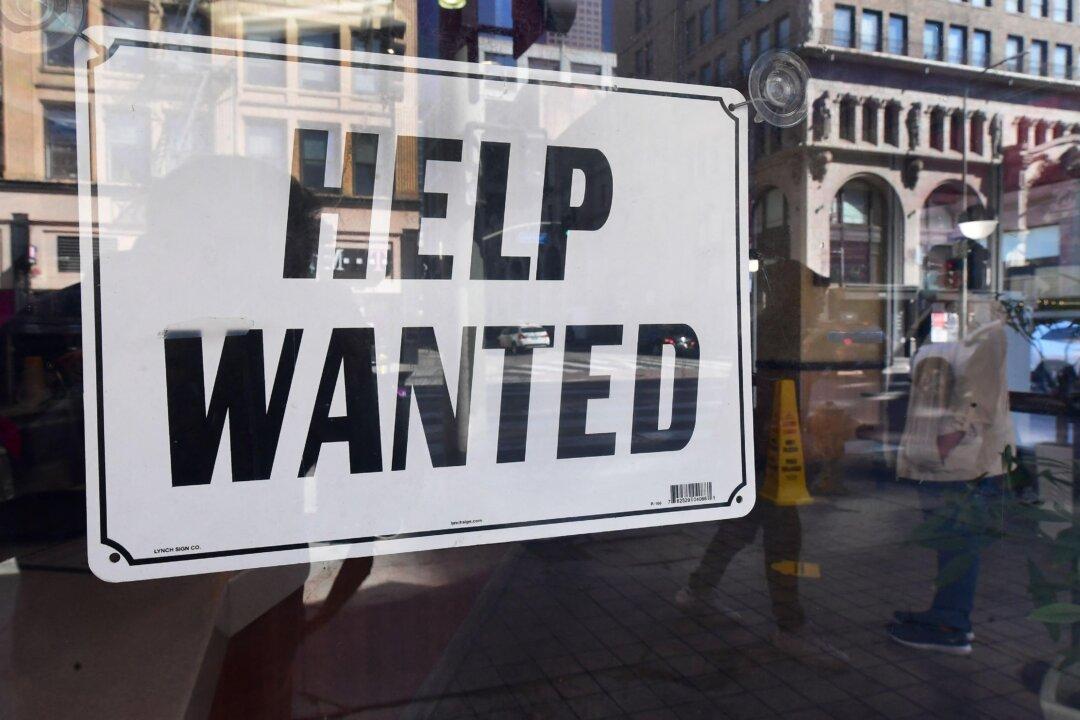California’s unemployment rates decreased substantially over the past year according to the latest data from the U.S. Department of Labor, but businesses still face worker shortages.
Employment rates have increased in 49 states in the nation, according to an April 15 report (pdf) released by the labor department’s Bureau of Labor Statistics, with California accounting for the largest job increase—over one million jobs created—in the past year.




